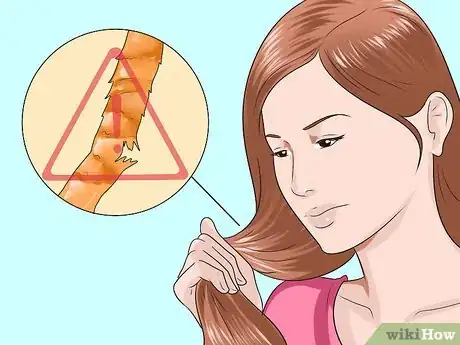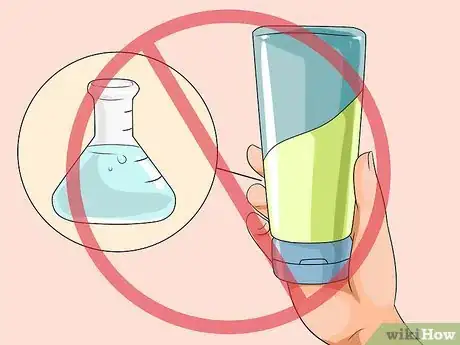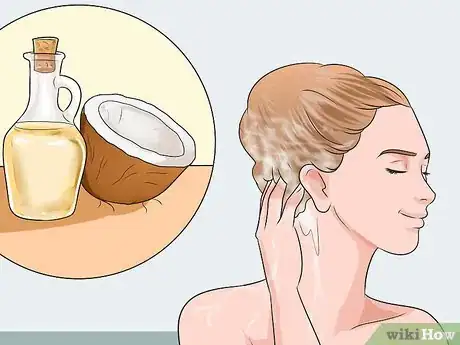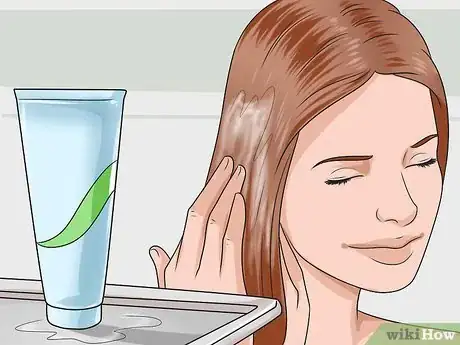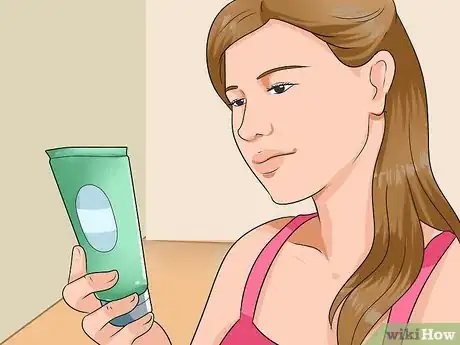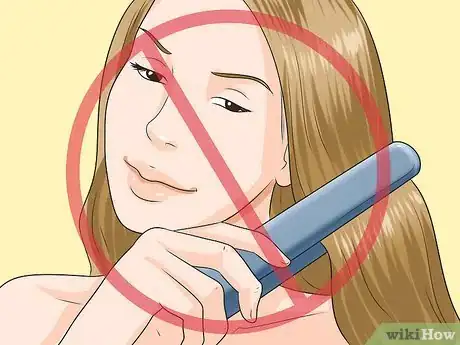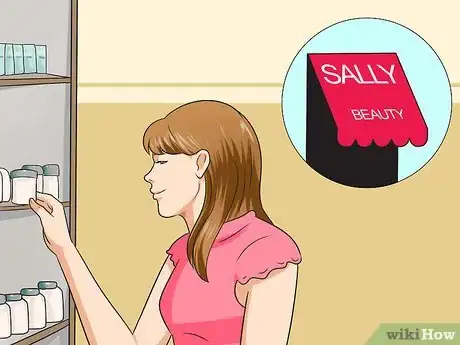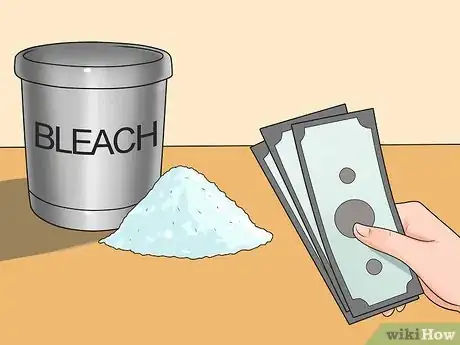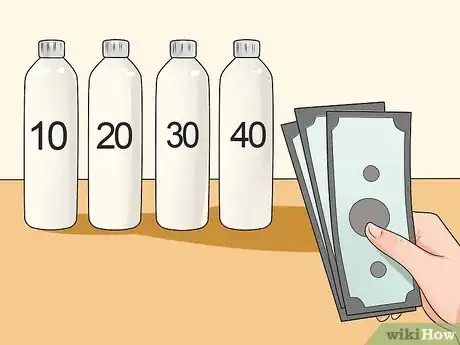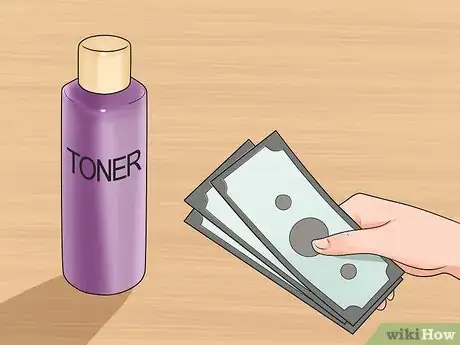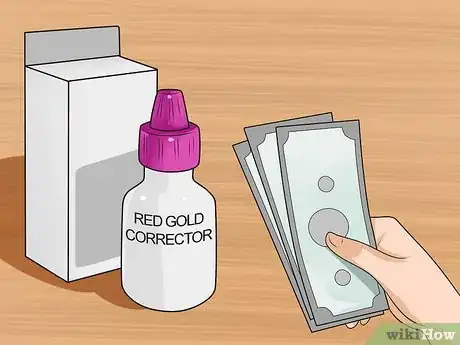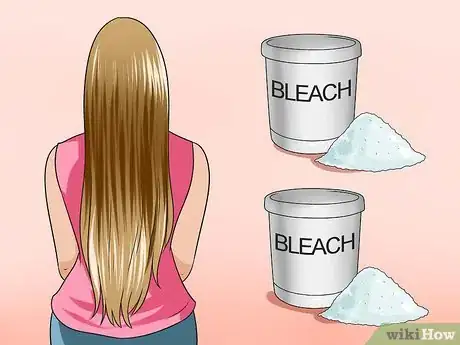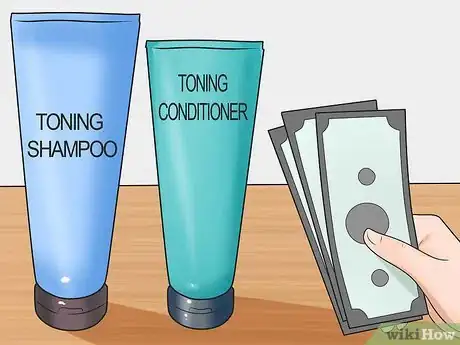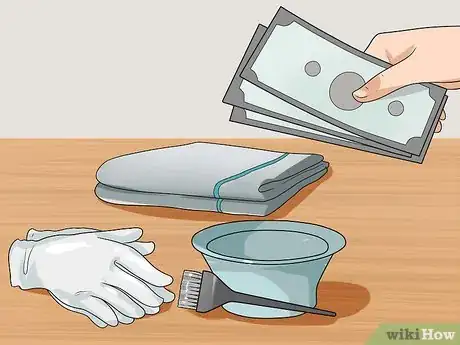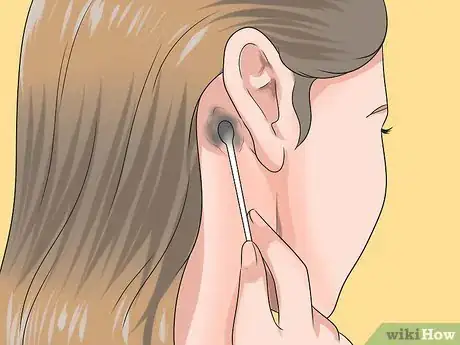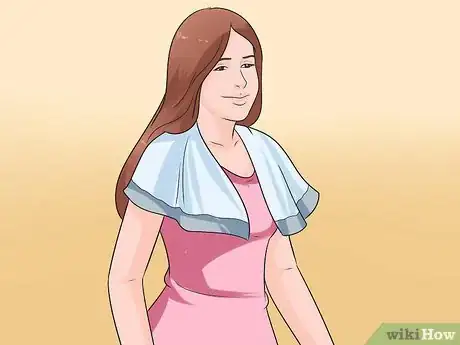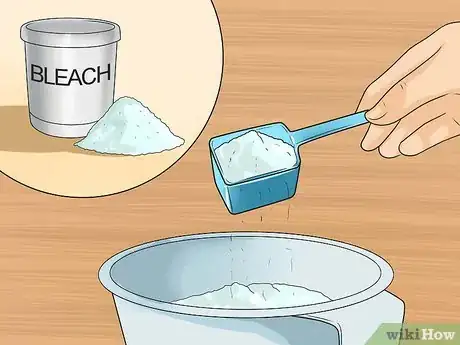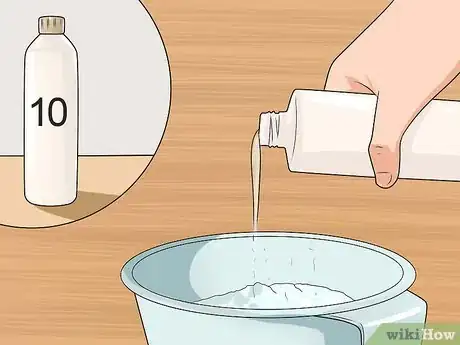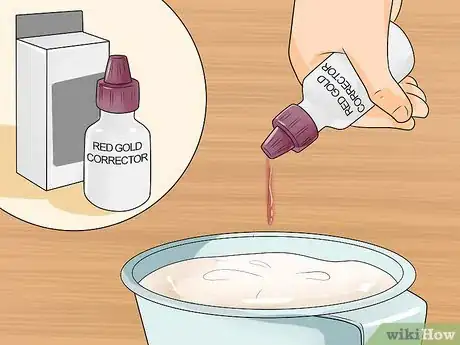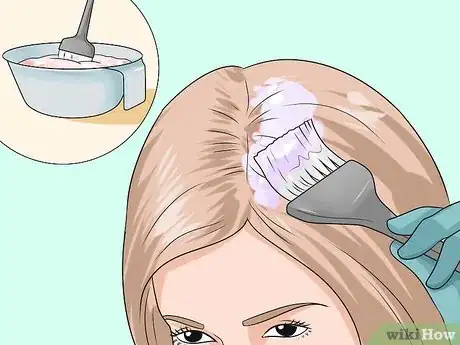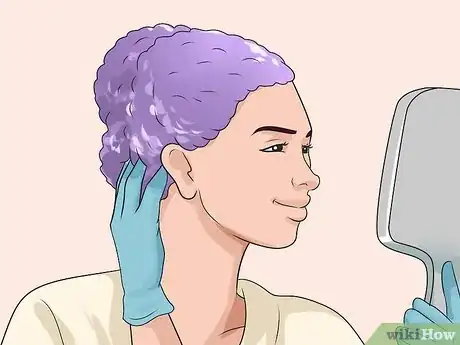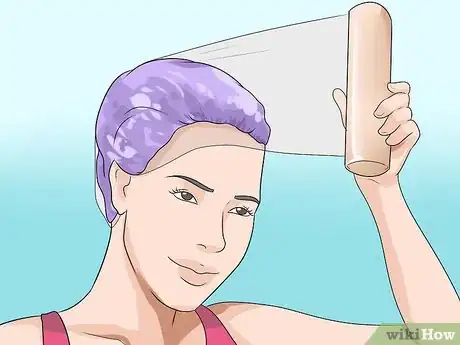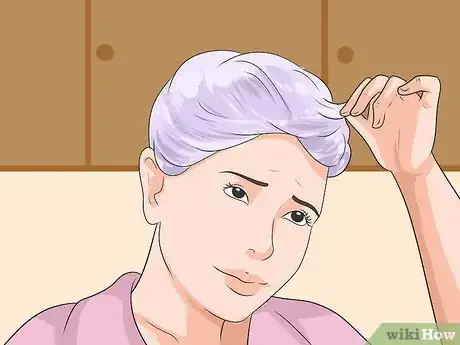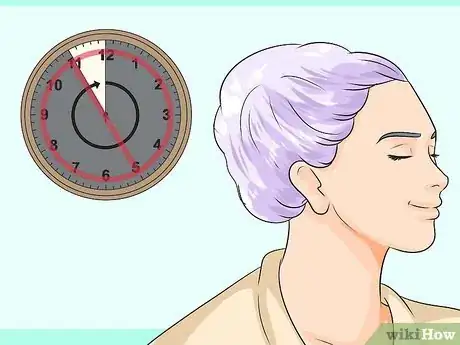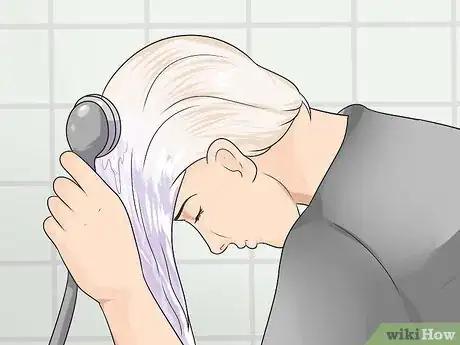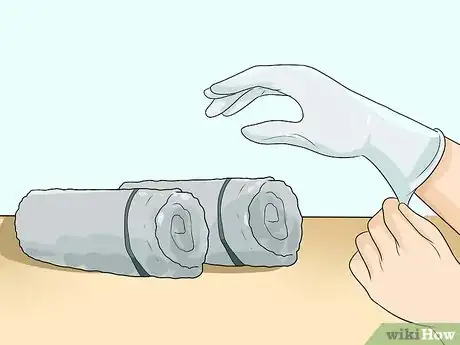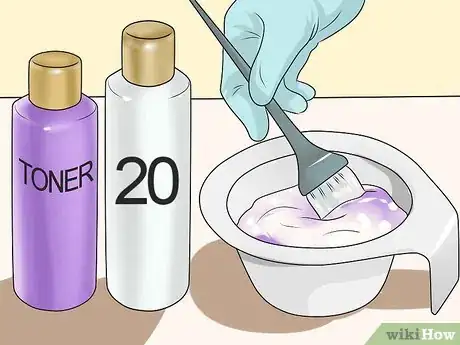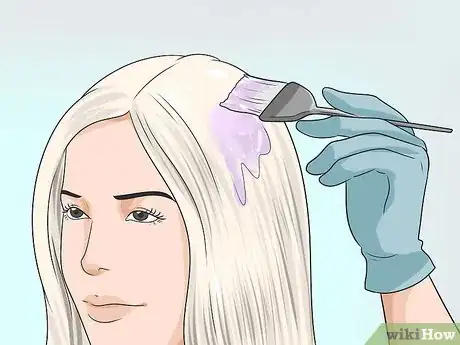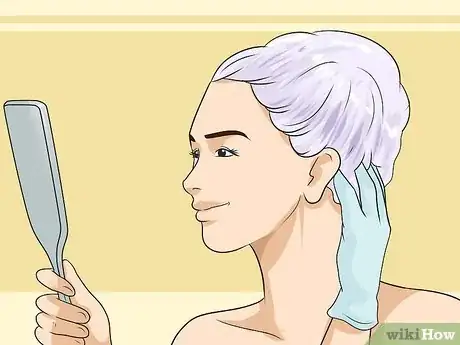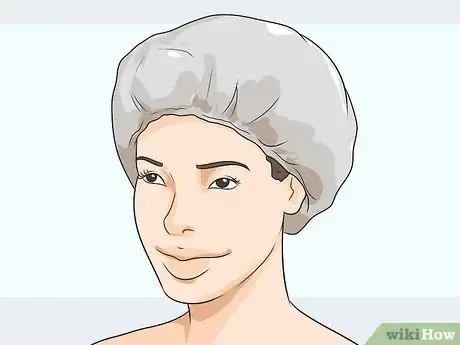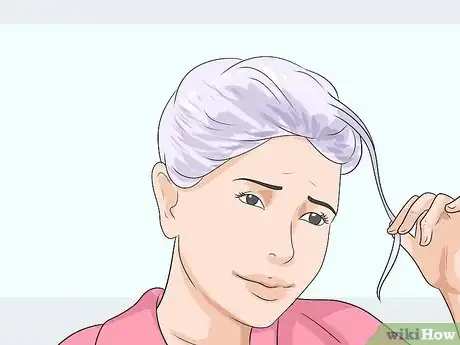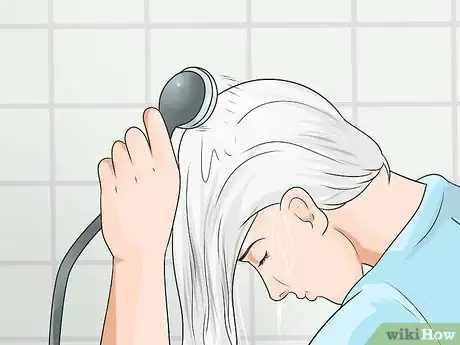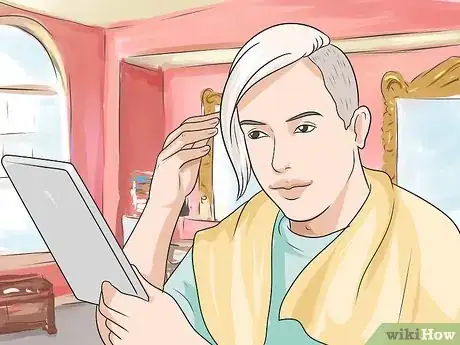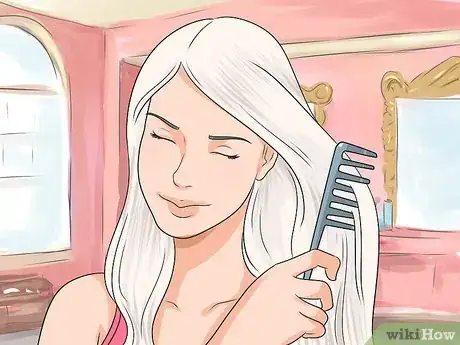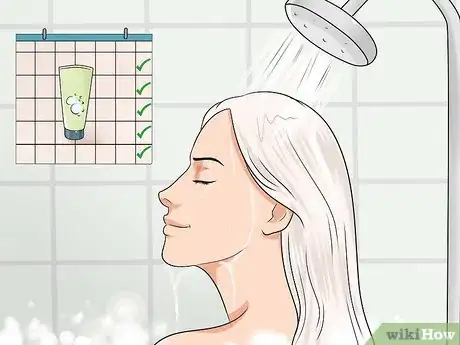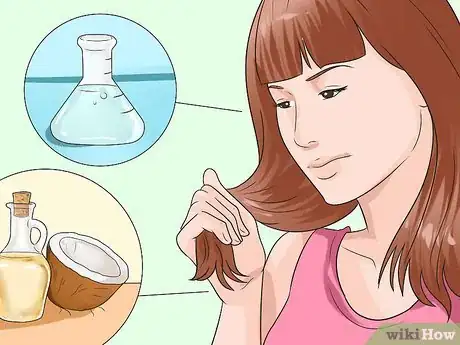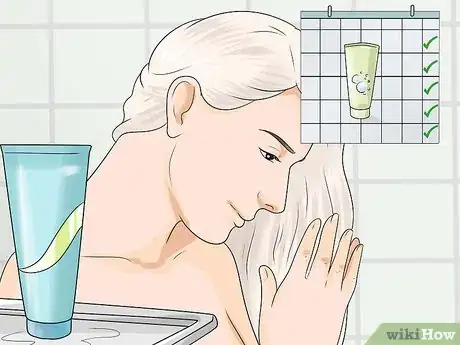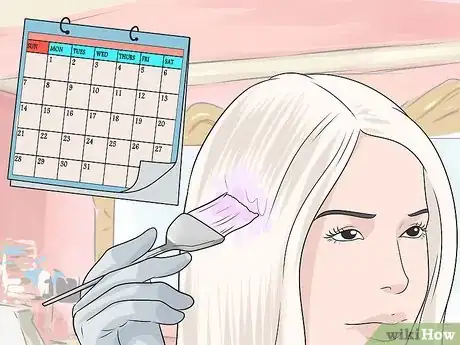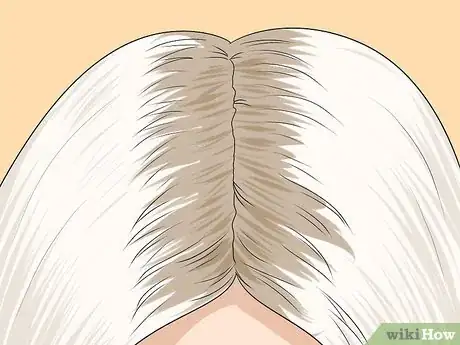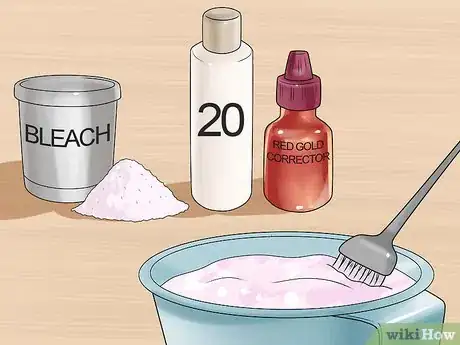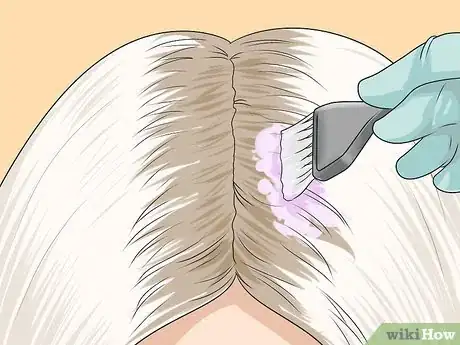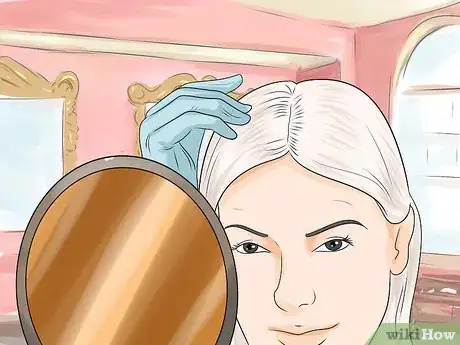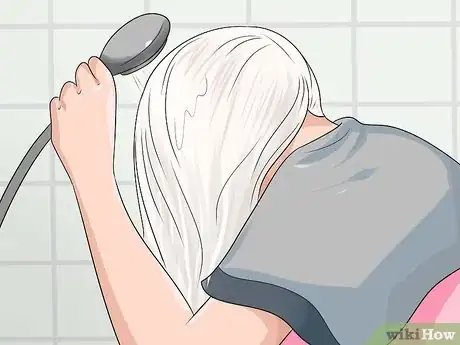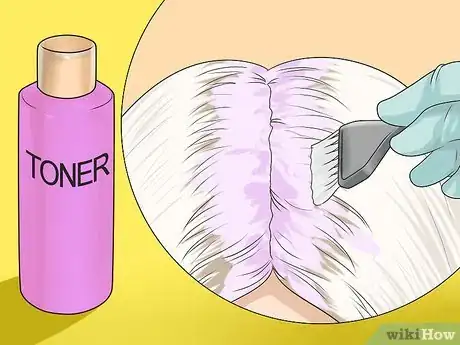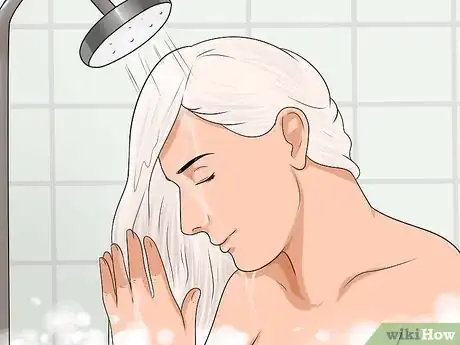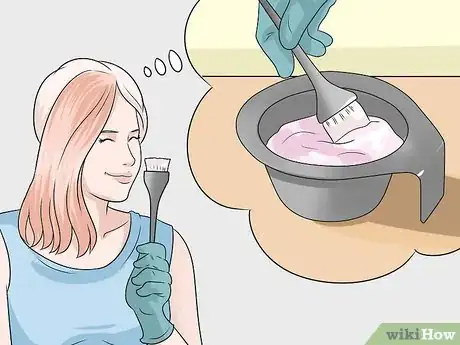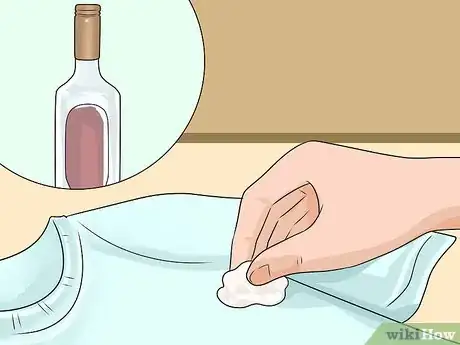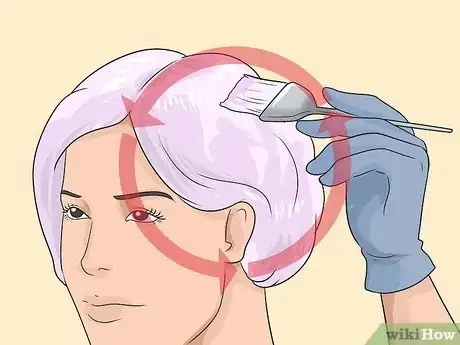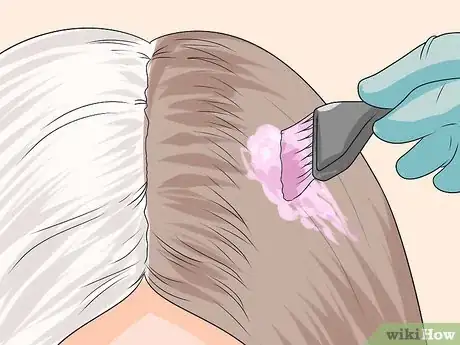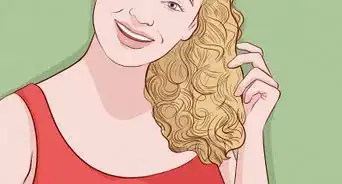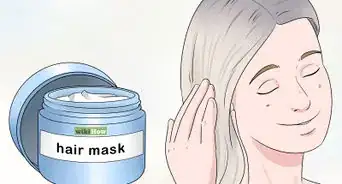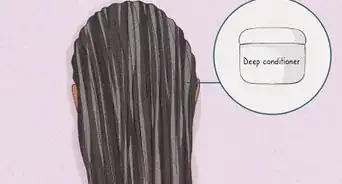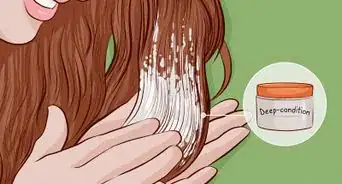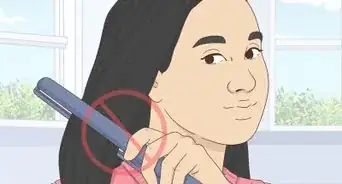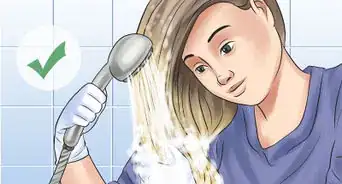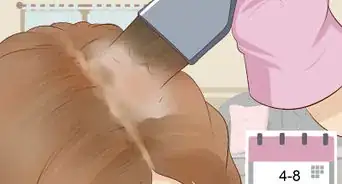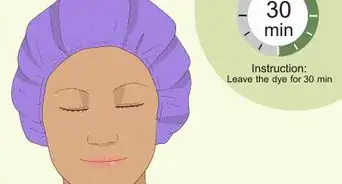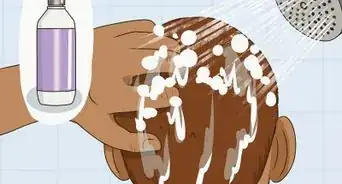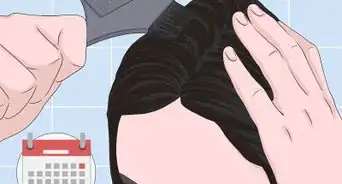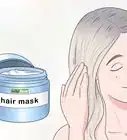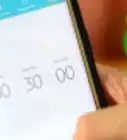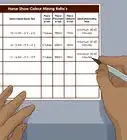This article was co-authored by Janet Miranda. Janet Miranda is a Professional Hair Stylist, Makeup Artist, and the Founder of Be.NYLA. With over 15 years of experience, Janet specializes in makeup and hair for advertising, commercial, editorial, runway, special events, television, and videos. She was trained at Vidal Sassoon Academy and with top hair and makeup artists including MAC Cosmetics and Redken. Janet has worked five seasons of New York Fashion Week and one season on Project Runway. She continues to add brands to her growing client list including Armani Exchange, Neutrogena, and Pantene. Janet’s work has been featured on CBS, Brides Magazine, 100 Layer Cake, Style Me Pretty, Green Wedding Shoes, Ireland Image Brides Magazine, and Elle Japan.
There are 11 references cited in this article, which can be found at the bottom of the page.
wikiHow marks an article as reader-approved once it receives enough positive feedback. This article received 24 testimonials and 84% of readers who voted found it helpful, earning it our reader-approved status.
This article has been viewed 2,479,379 times.
If you want to make a bold, beautiful statement with your hair, consider turning it white. Stripping hair of its color can dry it out, but if you use the right technique you can avoid long-term damage. Learn how to use bleach and toner products to get stunning, snow-white hair.
Things You Should Know
- Build healthy hair by using moisturizing products and putting coconut oil in your hair. Avoid bleaching your hair if it's damaged.
- Apply bleach to your hair and check on it every 15 minutes. After rinsing, use a toner to remove any yellow or orange from your hair.
- Be gentle with your bleached hair, and use a deep conditioner once a week to avoid breakage.
- Bleach and tone your roots every 2 months.
Steps
Building Healthy Hair
-
1Consider the quality of your hair before deciding to bleach it. If you want to bleach your hair, you’ll want to get your hair as healthy as possible. In the weeks leading up to bleaching your hair, avoid anything that may damage your hair — particularly chemicals and heat.
- If your hair feels dry and damaged, spend some time repairing before you bleach it. You can do this with deep conditioning treatments and by letting your hair dry naturally, without the use of styling products or tools.
-
2Don’t use chemicals on your hair. The bleaching process works best on healthy hair that has not previously been dyed, permed, straightened or otherwise chemically treated.[1]
- Professional hair stylists generally recommend waiting at least 2 weeks to between applying any chemicals to your hair; this time frame may be shortened or lengthened depending on how healthy your hair looks and feels.[2]
- If your hair looks and feels healthy after you’ve dyed it, waiting 2 weeks before you bleach it will likely be fine.
Advertisement -
3Cover hair in coconut oil at least 3 hours prior to bleaching. Rub some extra virgin coconut oil between your palms to warm it up, then massage it into your hair and scalp. You needn’t wash the oil out before bleaching.
- If possible, leave coconut oil on your hair overnight before bleaching.
- Some people even claim that the oil can help the bleaching process, although there is no real evidence for this.
- Coconut oil is made up of molecules that are small enough to penetrate the hair shaft, making it an effective choice for moisturizing your hair.[3] Besides being a moisturizer, coconut oil has many other benefits such as providing shine and softness. It also works against dandruff and stimulates hair growth.
-
4Use gentle, moisturizing shampoos and conditioners. Look for ones that moisturize your hair without adding buildup or stripping your hair of its natural oils. Products formulated for "normal" hair are your best choice because they cleanse your hair without stripping it. If you're on a budget, you can find high-quality salon brands at beauty outlets and discount department stores.
- What to look for: low pH, oil (argan, avocado, olive), glycerin, glyceryl stearate, propylene glycol, sodium lactate, sodium PCA, and alcohols that start with “c” or “s.”[4]
- What to avoid: strongly fragranced products, alcohols whose names include “prop”, sulfates, and any products that claim to add volume to your hair.[5] [6]
-
5Choose your styling products with care. Pay attention to what types of styling products you use. For example, anything that provides lift or volume to your hair will also dry it out.[7]
- As with shampoos and conditioners, only put things on your hair that will moisturize it.
-
6Avoid using heat on your hair. Don’t use a hair dryer, straightening iron, or curling iron on your hair. Applying heat damages and weakens hair follicles. After washing your hair, don't rub it with a towel — use the towel to gently squeeze the water from your hair.
- If you must use a towel to dry your hair, consider a microfiber towel. They are made to prevent damage caused by improperly drying, and they also reduce frizz.
- If you simply must style your hair, consider using no-heat alternatives to straightening and curling your hair. Type “no heat alternative hair styling” into a search engine to discover a variety of methods.
Gathering Materials
-
1Go to a beauty supply store. Drugstore brands of hair dye are generally of a poorer quality than the ones you can get in a salon. Beauty supply shops allow you to buy professional-quality products and tools.
- Sally Beauty Supply is one of the most popular international beauty shops. Check to see if there's one — or one like it — in or near your city.
-
2Purchase bleach powder. Bleach powder comes in packets or tubs. If you plan on bleaching your hair more than once, a tub is usually cheaper in the long run.
-
3Purchase a cream developer. Cream developer reacts with the powder to bleach your hair. It comes in different volumes ranging from 10 to 40; the higher the volume, the quicker it will turn your hair blonde, but also the more damaging it will be.
- Many stylists recommend using 10 to 20 volume. It will take longer for the mixture to lighten your hair, but it will also be much less damaging than using the higher volumes.
- If you have fine, fragile hair, use a 10-volume developer. For dark, coarse hair, a 30- or 40-volume developer might be necessary.[8]
- A 20-volume developer is your safest bet for effectiveness and gentleness, so if in doubt, choose that one![9]
-
4Purchase a toner. Toner is what will take your hair from yellow to white.[10] Toners come in a variety of shades, including blue, silver and purple.
- When choosing a toner, take your skin tone and hair color into consideration. If your hair is too golden, you’ll want a toner shade that’s opposite gold on the color wheel such as a blue or violet ash-based toner.[11]
- Some toners need to be mixed with developers before being applied to your hair, while others come ready to apply. Both can be equally effective.
-
5Buy a red gold corrector (optional). Red gold correctors often come in little packages that you can add to your bleaching mixture to help reduce brassiness; they aren’t absolutely necessary for getting white hair, but a lot of people swear by them.
- Whether you need a red gold corrector will really depend on your hair. People with darker hair, or hair that contains red, orange, or pink tones may find red gold correctors particularly useful in getting their hair extra white.
- Unless you already have ashy blonde hair that you're trying to make white, you might want to err on the side of caution and purchase a red gold corrector, as they are fairly inexpensive at around $1 USD per package.
-
6Make sure you have enough bleach for your hair. If you have long hair, you'll likely need at least two packages of bleach, developer, and red gold corrector, if not more.
- If you’re unsure of how much you’ll need, you're better off buying too much than not enough. You can use any untouched packages later when you touch up your roots.
-
7Purchase toning shampoo and conditioner. Look for products that are specifically made for bleach blonde hair. These shampoos and conditioners will be a rich purple or purple-blue in color.
- Purple shampoos are recommended for removing brassiness and yellow, unwanted tones from the hair.
- If you’re on a budget, at the very least buy the shampoo, which is more effective than the conditioner in keeping the brassiness out of your hair.
-
8Purchase hair-dyeing tools. In addition to the ingredients for your bleach mixture, you’ll need a tint brush, a plastic mixing bowl, plastic spoon, gloves, plastic hair clips, towels, and plastic wrap or a clear plastic shower cap.
- Do not use any metal as it can react negatively to the bleach.
- For towels, you can use old ones that you already have too; just make sure they’re ones you don’t mind wrecking.
Bleaching
-
1Do preliminary tests. Before you bleach your hair you’ll need to do a patch test and a strand test. A patch test will ensure that you’re not allergic to anything in the bleach mixture, and a strand test will help you determine how long to leave the mixture in.
- To do a patch test, create a tiny amount of the mixture you will use on your hair and place a small dab of it behind your ear. Leave it for 30 minutes, wipe any excess off, then try not to touch it or get it wet for 48 hours. If after 48 hours that area of skin is fine, go ahead with bleaching your hair.
- To do a strand test, prepare a small amount of the bleach mixture and apply it to a strand of your hair. Check it every 5 to 10 minutes until it reaches the desired color. Note the time it took to reach this color so that you have an idea of how long it will take on your whole head.
- Another thing to pay attention to in the strand test is how damaged the hair feels after you've washed and conditioned the strand. If it feels very damaged, try a lower-volume developer or a slower bleaching process (i.e. bleaching your hair over several weeks instead of in one go).[12]
- If you only do one test, do the patch test, as a severe allergic reaction could be fatal.
-
2Get yourself ready. Put on old clothes that you don't mind getting stained. Drape a towel around your shoulders, and have another stack of towels ready in case the bleach mixture gets somewhere it shouldn’t. Put on a pair of gloves to protect your hands.
- Gloves are very important when bleaching hair to prevent chemical burns.
-
3Place the bleach powder in the mixing bowl. Using a plastic spoon, place as much bleach powder as you need in the mixing bowl. The powder should come with instructions that you can follow.
- If it doesn’t, you’ll want to use roughly a 1:1 ratio between the powder and its developer. You may want to do one scoop of powder and then one scoop of developer, mixing them as you go.
-
4Add developing cream to the bleach powder. Add the correct amount of developer and mix it with a plastic spoon. Aim for a thick, creamy gravy consistency.
- Unless stated otherwise on the packaging, the ratio of developer to powder should be roughly 1:1 — 1 spoonful of powder per 1 spoonful of developer.[13]
-
5Add red gold corrector to the mixture. Once the powder and developer are combined, add some red gold corrector to the mixture using the instructions on the package as a guideline.
-
6Apply the mixture to dry, unwashed hair. Using a tint brush, apply the mixture to your hair moving from the ends upward, leaving roughly an inch of roots. Your roots will lighten faster than the rest of your hair due to their proximity to your warm scalp; for this reason, leave your roots until the rest of your hair is done.
- Unless your hair is quite short, you’ll benefit from using clips to section off your hair as you work on it.
- Work from the back of your head to the front of your head.
- Wait at least 24 hours from washing your hair to bleach it. The oilier your hair is, the better, as your hair’s natural oils will help reduce the damage the bleach does to your hair and scalp.[14]
-
7Check that the mixture is evenly distributed on your hair. Once you’ve applied the bleach mixture to all of your hair including your roots, check to ensure that your hair is fully saturated with the mixture.
- You can do this by massaging your hair around your head and feeling for any spots that are dryer than the rest. When you come across these spots, add some more of the bleach mixture to them and massage it into your strands.
- Use a mirror to look at the back of your head.
-
8Cover your hair in plastic wrap. You can also use a clear plastic shower cap.
- As the bleach works, your scalp may begin to itch and sting. This is normal.
- If the tingling and stinging become too painful, remove the plastic wrap and wash out the bleach. If your hair is still too dark, you can try to bleach it again with a lower-volume developer in 2 weeks if it's healthy enough.
- Avoid the temptation to apply any heat to your hair at this point, as applying heat could wind up in your hair falling out completely.
-
9Check on your hair periodically. After 15 minutes, check a strand of hair to see how the bleaching has progressed. [15] Use a spray bottle to wet a small section, then use a towel to wipe some of the bleach mixture away so that you can clearly see the color of the strand.
- If your hair still looks dark, reapply more bleach to the strand of hair, replace the plastic wrap and allow it to sit for another 10 minutes.
- Continue checking your hair every 10 minutes until it has become completely blond.
-
10Do not leave the bleach in your hair for over 50 minutes. If you do, it could cause your hair to break off and/or fall out completely. Bleach is capable of dissolving hair, so you really do need to be careful about how extreme you are with it.
-
11Wash out the bleach.[16] Remove the plastic wrap and run your head under cool water until all traces of the bleach are gone. Wash, condition, and rinse your hair as normal, then gently squeeze the water from it with a clean towel.
- Your hair should be a yellow blond color. If it looks bright yellow, proceed to the instructions for toning.
- If your hair is orange or still dark, it's necessary for you to bleach it again before toning. To keep your as healthy as possible, wait 2 weeks between bleaching.[17] Note that you won’t need to reapply the bleach to your roots if your roots are whiter than the rest of your hair. Just apply the bleach to the parts you want to lighten further.
- You may even want to stretch the bleaching process over several weeks. If your hair is quite thick and course, You might even need to repeat the process up to five times.[18]
Toning
-
1Prepare yourself for toning. Once you've bleached your hair, you're ready to tone it. Just like with the bleaching process, you should wear old clothes and gloves. Have a stack of towels handy and make sure your hair is completely dry before starting.
- You can tone your hair directly after bleaching it (just make sure the bleach is washed out first!). You will also likely want to tone your hair every couple of weeks in order to keep it looking white.
-
2Mix the toner. If your toner comes premixed and ready to use, you can skip this step. In a clean plastic mixing bowl, mix the toner and developer according to the instructions on the packaging.
- The ratio is usually 1 part toner to 2 parts developer.
-
3Apply the toner to your damp hair. Use your tinting brush to paint your hair with the toner, following the same technique as when you applied the bleach (ends to roots, back to front).
-
4Ensure that the toner is evenly applied. Work your hands through your hair to ensure that the toner is saturating your hair and evenly applied.
- Use a mirror to have a look at the back of your head to make sure the toner is fully covering your hair.
-
5Cover your hair with plastic wrap or a shower cap. Allow the toner to sit in your hair for the length of time specified on the packaging. Depending on the strength of the toner and the color of your hair, it could take as little as 10 minutes for your hair to go white.
-
6Check your hair every 10 minutes. Depending on the type of toner you use and how on light your hair already is, the toner could work more quickly or slowly than expected.
- Check your hair every 10 minutes to ensure that you don’t end up with blue hair: use a towel to scrape some toner off a thin strand of hair to get a sense of what color it’s going. If your hair’s not the desired color yet, reapply toner to that strand and put it back up beneath the plastic cap/wrap.
-
7Wash out the toner. Run your hair under cool water until all traces of the toner are gone. Shampoo and condition as normal, and gently squeeze the water from your hair with a clean towel.
-
8Examine your hair. Let your hair air dry or, if you are impatient, dry it with your blow dryer’s coolest setting. Now that the bleaching and toning processes are complete, your hair should be a bright, sparkling white.
- If you missed a spot, wait a few days and repeat the process on the strand of hair in question.
Caring for White Hair
-
1Be very gentle with your hair. White hair is fragile and damaged hair, even if it is in the best condition it can be. Take care of your hair, don't shampoo it if it feels dry and don't go overboard on the brushing, straightening and curling.
- Most of the time, you’ll want to let your hair air dry. If you must blowdry your hair, be sure to use the coolest setting.
- Avoid applying heat or otherwise manipulating your natural hair texture as much as possible, as this can cause your hair to break off — you could end up with chunks of hair sticking out from your head that are only an inch or two long.[19]
- If you simply must straighten your hair, you can achieve a straightening effect with a blow dryer and a round brush — do this as an alternative to using a straightener.[20]
- You’ll want to comb your hair with a wide-tooth comb.[21]
-
2Leave time between washings. Many specialists recommend washing you hair only once a week after bleaching it.[22] Shampoo strips your hair of its natural oils, and your bleached hair will likely need all the oil it can get.
- If you regularly work out/sweat or use a lot of products in your hair, you can likely bump this up to twice a week. You can also substitute dry shampoo for a wash.
- When you dry your hair, gently pat and squeeze it with a towel — don’t rub the towel quickly over your head as this can cause more damage to your hair.[23]
-
3Know which products to use on your hair. Use products specially made for bleached and damaged hair: a purple toning shampoo and a deep conditioner at the very least. Avoid products that volumize your hair, as this can dry it out.
- A good hair oil will keep your hair looking softer and less frizzy. Some people swear by extra virgin coconut oil to reduce frizz and help condition their hair.
-
4
-
5Reapply a toner regularly. You’ll need to reapply a toner regularly to keep your hair white. You might even need to do this every one or two weeks. Using a toning shampoo will help reduce how often you need to apply a toner to your hair.
Bleaching Your Roots
-
1Try not to let your roots grow too long. Try to renew your bleach when your roots are an inch at the longest. This will help keep your hair looking more even.
- If you let your roots grow longer, it may be more difficult to touch them up without having them clash against the rest of your hair.
- Since hair grows about .5-inch (1.25 cm) per month, you will likely need to do your roots every two months.
-
2Put together the bleach mixture. This will be the exact same process as when you initially bleached your hair. Mix the lightening powder with the developer on a 1:1 ratio, then add the red gold corrector to the mixture as per the package’s instructions.
-
3Apply the mixture to your dry, unwashed roots. Using a tint brush, only apply the bleach to your roots. You can let it drag down a teensy bit into your already bleached hair, but try not to cover your already bleached hair too much.
- Be careful not to over-process your hair.
- If your hair is quite thick or long, you’ll want to section it off with clips. You might even find it useful to section off short hair so that you can make sure you get all the roots.
- Use the pointy end of the tint brush to work your way through your hair, painting the mixture on your roots, flipping the hair over with the end of the tint brush, and then painting the other side before moving on to the next chunk of hair.
-
4Check your hair regularly. After about 15 minutes, check to make sure that your hair isn’t going too light. Check on it every 10 minutes after that until it's the desired color.
-
5Wash the bleach out of your hair. Completely rinse the mixture out of your hair with cool water, then shampoo and condition as normal. Gently squeeze any excess water from your hair with a clean towel.
-
6Apply a toner to your hair. As with the original toning process, prepare your toner and apply it to your roots using a tint brush.
- If the rest of your hair could also use a tone, apply the toner to your yellow roots first, then pull it down to the rest of your hair.
- Remember to keep an eye on your every 10 minutes to make sure it’s not going too blue, silver or purple.
-
7Wash the toner out of your hair. Rinse your hair with cool water, then shampoo and condition it. Afterwards, gently squeeze the water out of it and, preferably, let it air dry.
Dealing with Mishaps
-
1Don’t panic if you run out of bleach before you've covered all your hair. If you find partway through applying bleach to your hair that you don’t have enough to cover your entire head, it’s not the end of the world.
- If you run out of the mixture but you still have all the ingredients you need, quickly mix this together and then continue applying the bleach to your hair. It shouldn't take more than a few minutes for you to make the mixture.
- If you need to go buy more ingredients, complete the bleaching process for the hair that you’ve covered in bleach (allowing it to sit on your hair until it’s blonde or until a maximum of 50 minutes have passed — whichever comes first). Then at your earliest opportunity, buy more materials and apply the bleach to your remaining unbleached hair.
-
2Remove bleach stains from your clothes. Ideally you’ve worn old clothes and protected them with a towel. If for some reason bleach gets on something you care about, you can try to remove it using the following method:
- Apply a clear alcohol such as gin or vodka to a cotton wool ball.
- Rub the stain and the area around it with the ball; this should move some of the garment’s original color over to the bleached area.
- Keep rubbing until the color has covered the bleached area.
- Rinse well in cold water.
- If this doesn’t work, you might consider bleaching the entire garment and then dyeing it with a fabric dye in a color of your choosing.
-
3Be patient. If you bleach your hair and after 50 minutes the color is nowhere close to blonde, don't panic. This is a common occurrence for people with darker and/or stubborn-to-dye hair. It may take you a few attempts to get your hair the color you want it.
- If you need to bleach your hair a few times to get it blonde, be sure to give yourself at least two weeks in between bleachings.
- After each bleaching, pay close attention to the quality of your hair. If it begins to feel very damaged, you’ll need to wait longer before you try again. Your hair should feel fairly healthy before you apply more bleach to it, otherwise you’ll risk it breaking off or falling out.
-
4Remove darker-colored bands from your hair. After a few root touch-ups you may find that your hair has developed bands of different shades of yellow.
- You can address the darker bands by applying a small amount of bleach to them and letting it sit for several minutes until the strip of hair is closer in color to the rest of your hair.
- These bands will generally become much less noticeable once you’ve toned your hair.
Expert Q&A
-
QuestionWhat kind of bleach kit should I get?
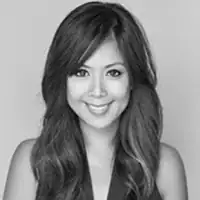 Janet MirandaJanet Miranda is a Professional Hair Stylist, Makeup Artist, and the Founder of Be.NYLA. With over 15 years of experience, Janet specializes in makeup and hair for advertising, commercial, editorial, runway, special events, television, and videos. She was trained at Vidal Sassoon Academy and with top hair and makeup artists including MAC Cosmetics and Redken. Janet has worked five seasons of New York Fashion Week and one season on Project Runway. She continues to add brands to her growing client list including Armani Exchange, Neutrogena, and Pantene. Janet’s work has been featured on CBS, Brides Magazine, 100 Layer Cake, Style Me Pretty, Green Wedding Shoes, Ireland Image Brides Magazine, and Elle Japan.
Janet MirandaJanet Miranda is a Professional Hair Stylist, Makeup Artist, and the Founder of Be.NYLA. With over 15 years of experience, Janet specializes in makeup and hair for advertising, commercial, editorial, runway, special events, television, and videos. She was trained at Vidal Sassoon Academy and with top hair and makeup artists including MAC Cosmetics and Redken. Janet has worked five seasons of New York Fashion Week and one season on Project Runway. She continues to add brands to her growing client list including Armani Exchange, Neutrogena, and Pantene. Janet’s work has been featured on CBS, Brides Magazine, 100 Layer Cake, Style Me Pretty, Green Wedding Shoes, Ireland Image Brides Magazine, and Elle Japan.
Professional Hair Stylist & Makeup Artist Make sure you get a bleach kit that says it's safe to be used on the scalp. Some bleach kits aren't, so you really want to make sure you're getting one that's scalp-safe.
Make sure you get a bleach kit that says it's safe to be used on the scalp. Some bleach kits aren't, so you really want to make sure you're getting one that's scalp-safe. -
QuestionHow many times can hair be bleached?
 Laura MartinLaura Martin is a Licensed Cosmetologist in Georgia. She has been a hair stylist since 2007 and a cosmetology teacher since 2013.
Laura MartinLaura Martin is a Licensed Cosmetologist in Georgia. She has been a hair stylist since 2007 and a cosmetology teacher since 2013.
Licensed Cosmetologist You should avoid re-bleaching the hair if possible. Some hair can hold up to two applications, but a third usually results in breakage.
You should avoid re-bleaching the hair if possible. Some hair can hold up to two applications, but a third usually results in breakage. -
QuestionWhat is the rarest natural hair color?
 Laura MartinLaura Martin is a Licensed Cosmetologist in Georgia. She has been a hair stylist since 2007 and a cosmetology teacher since 2013.
Laura MartinLaura Martin is a Licensed Cosmetologist in Georgia. She has been a hair stylist since 2007 and a cosmetology teacher since 2013.
Licensed Cosmetologist Red is the rarest natural color. Blonde is the second rarest. Brunette hair is more common.
Red is the rarest natural color. Blonde is the second rarest. Brunette hair is more common.
Warnings
- If you do not use gloves, the bleach will sting any open skin, turn it into an ugly white color and make it feel extremely dry and itchy.⧼thumbs_response⧽
- Swimming in chlorinated water can turn your hair a greenish color. If you must swim, apply a conditioner to your hair and place it in a swimming cap before getting in the water.⧼thumbs_response⧽
- If you go into the bleaching process with hair that's already damaged or weak, you risk more serious damage or breakage. Don't style with heat products or regularly shampoo before bleaching.⧼thumbs_response⧽
- Do not bleach your hair right after washing it. You have removed the oils that protect your scalp, so your scalp and hair will be a lot worse for wear than if you wait at least 24 hours.[25]⧼thumbs_response⧽
- Be patient with your hair. If you try to go too white too fast, you could end up causing hair breakage, hair loss or chemical burns.[26]⧼thumbs_response⧽
Things You'll Need
- Bleach powder
- Developer
- Red gold corrector
- Hair toner
- Toning shampoo
- Tint brush
- Mixing bowl
- Gloves
- Towels
- Plastic wrap
References
- ↑ http://articles.latimes.com/2013/jul/15/image/la-ig-paves-platinum-20130714
- ↑ http://www.hairfinder.com/hair2/bleachhairrelaxer.htm
- ↑ http://www.today.com/food/10-ways-use-coconut-oil-separating-myths-miracles-t9451
- ↑ http://www.webmd.com/beauty/hair-repair/ingredients-dry-hair?page=1
- ↑ http://www.webmd.com/beauty/hair-repair/ingredients-dry-hair?page=2
- ↑ https://www.aad.org/stories-and-news/news-releases/getting-past-the-hype-dermatologist-untangles-common-hair-care-misconceptions
- ↑ http://www.webmd.com/beauty/hair-repair/ingredients-dry-hair?page=2
- ↑ http://www.howtohairgirl.com/2013/12/dos-dont-diy-hair-coloring/
- ↑ http://www.howtohairgirl.com/2013/12/dos-dont-diy-hair-coloring/
- ↑ Janet Miranda. Professional Hair Stylist & Makeup Artist. Expert Interview. 11 February 2021.
- ↑ http://www.howtohairgirl.com/2013/12/dos-dont-diy-hair-coloring/
- ↑ https://www.haircrazy.com/articles/beginner-guides/how-to-do-a-strand-test/
- ↑ https://www.haircrazy.com/articles/beginner-guides/bleaching-your-hair/
- ↑ Janet Miranda. Professional Hair Stylist & Makeup Artist. Expert Interview. 11 February 2021.
- ↑ Janet Miranda. Professional Hair Stylist & Makeup Artist. Expert Interview. 11 February 2021.
- ↑ Janet Miranda. Professional Hair Stylist & Makeup Artist. Expert Interview. 11 February 2021.
- ↑ http://articles.latimes.com/2013/jul/15/image/la-ig-paves-platinum-20130714
- ↑ http://articles.latimes.com/2013/jul/15/image/la-ig-paves-platinum-20130714
- ↑ http://articles.latimes.com/2013/jul/15/image/la-ig-paves-platinum-20130714
- ↑ http://www.xojane.com/beauty/how-to-avoid-damaged-bleached-hair
- ↑ http://www.xojane.com/beauty/how-to-avoid-damaged-bleached-hair
- ↑ http://www.xojane.com/beauty/how-to-avoid-damaged-bleached-hair
- ↑ http://www.xojane.com/beauty/how-to-avoid-damaged-bleached-hair
- ↑ http://articles.latimes.com/2013/jul/15/image/la-ig-paves-platinum-20130714
- ↑ Janet Miranda. Professional Hair Stylist & Makeup Artist. Expert Interview. 11 February 2021.
- ↑ http://articles.latimes.com/2013/jul/15/image/la-ig-paves-platinum-20130714
About This Article
To get white hair, start by mixing equal parts bleaching powder and developing cream in a bowl. Then, add some red gold corrector to the mixture, which will help get rid of unwanted warm tones in your hair. Next, evenly distribute the mixture throughout your dry hair and then cover your hair in plastic wrap. Once your hair is yellowish blonde, rinse out the bleach and apply a toner to your hair. Cover your hair with plastic wrap and check on it every 10 minutes until it's white. Then, just rinse out the toner and you're done. If you want to learn more from our Cosmetologist co-author, like how to take care of your white hair so it stays healthy, keep reading!
